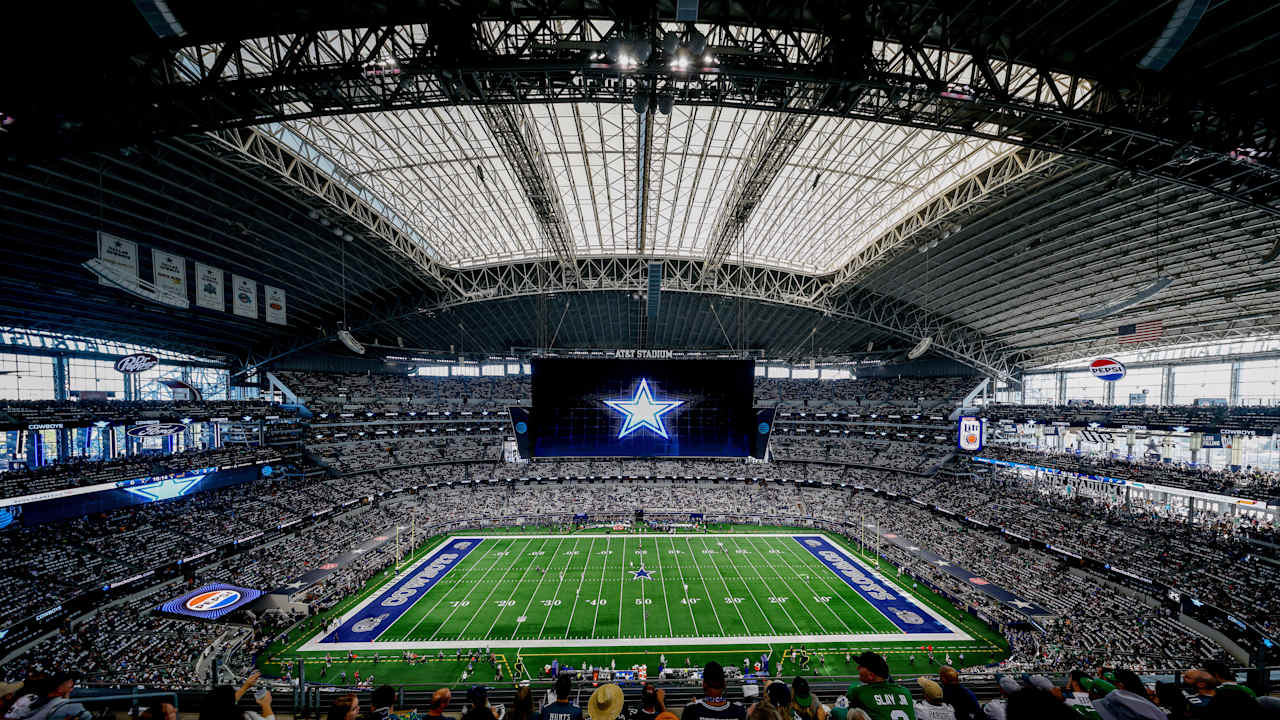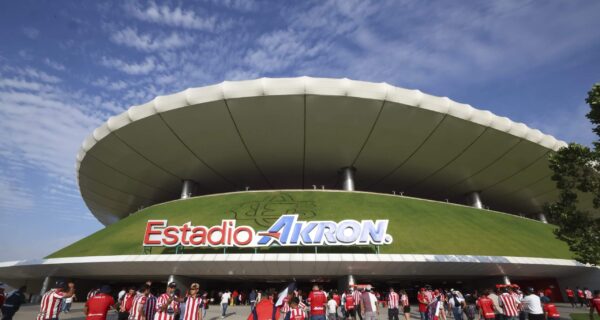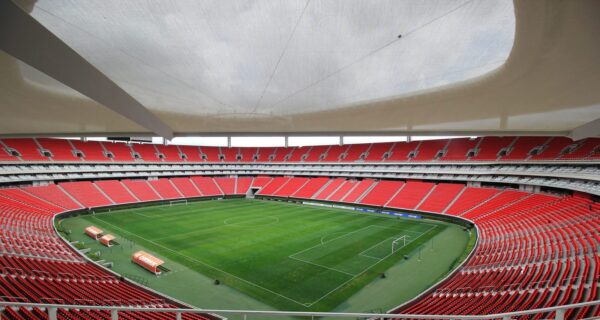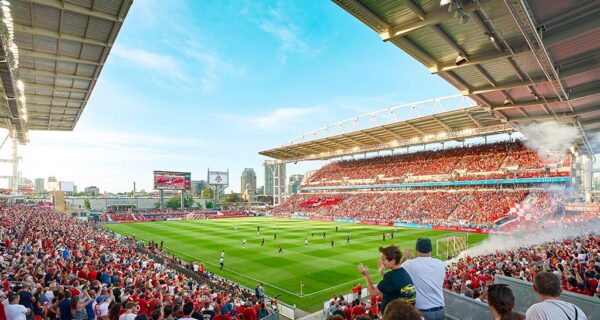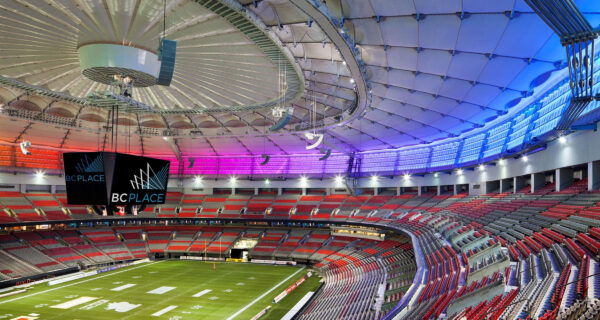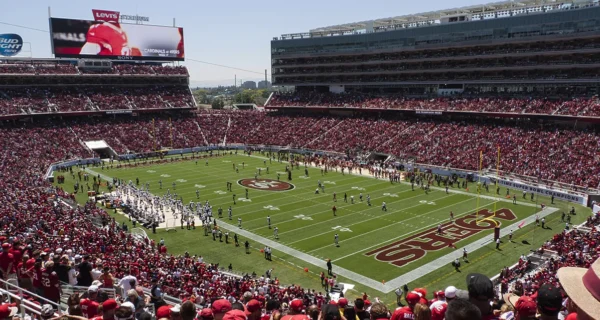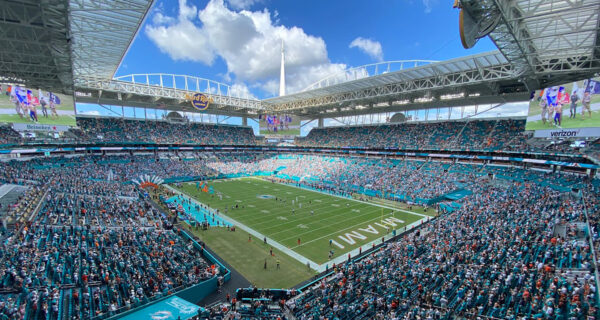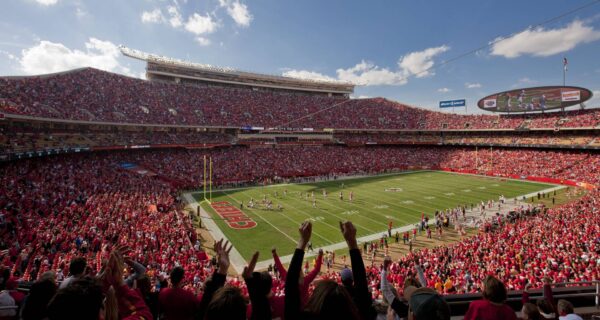AT&T Stadium, the magnificent home of the Dallas Cowboys, will play a major role in the upcoming 2026 FIFA World Cup. This iconic venue in Arlington, Texas, is undergoing significant renovations to prepare for hosting multiple World Cup matches, including a coveted semi-final.
The stadium has established itself as one of the premier sports and entertainment venues in the United States since opening in 2009, and its selection as a World Cup venue further cements its status on the global stage.
Let’s explore everything you need to know about this impressive stadium, from its massive capacity to its upcoming transformations for the world’s biggest sporting event.
AT&T Stadium Overview
Known affectionately as “Jerry World” after Dallas Cowboys owner Jerry Jones, AT&T Stadium stands as a monument to modern stadium design and engineering excellence. Originally opened on May 27, 2009, as Cowboys Stadium before receiving its current name in 2013, this architectural marvel cost approximately $1.3 billion to construct (equivalent to about $1.91 billion in 2024 dollars).
The stadium was designed to be more than just a football venue – it was envisioned as a large entertainment complex capable of hosting a variety of events beyond NFL games. This versatility has made it an ideal candidate for hosting World Cup matches, as it can accommodate the specific requirements of international soccer competitions while providing an exceptional experience for fans.
As the 2026 FIFA World Cup approaches, AT&T Stadium is preparing to showcase its grandeur to a global audience. The tournament will mark a historic moment as the first World Cup to be hosted by three nations (United States, Mexico, and Canada) and the first to feature an expanded 48-team format.
AT&T Stadium Location and Accessibility
Geographic Location
AT&T Stadium is located at 1 AT&T Way in Arlington, Texas, situated in the Dallas-Fort Worth metroplex. Its precise coordinates are 32° 44′ 52.2276” N and 97° 5′ 37.0608” W. The stadium is strategically positioned between Dallas and Fort Worth, making it accessible to residents throughout the region.
Arlington itself has become a major sports hub, with AT&T Stadium joining Globe Life Field (home of the Texas Rangers) to create a prominent sports district. Other nearby attractions include Dr. Robert Cluck Linear Park and Richard Greene Linear Park, providing additional entertainment options for visitors.
Transportation and Access
For the 2026 World Cup, transportation planning will be crucial as thousands of international visitors navigate their way to the stadium. The venue is easily accessible via major highways, including Interstate 30, which runs east-west through the Dallas-Fort Worth area.
Public transportation options are being expanded in preparation for the tournament, though many visitors may opt for rideshare services or shuttle buses from designated parking areas. The stadium itself features extensive parking facilities that can accommodate thousands of vehicles.
Stadium Capacity and Seating
AT&T Stadium boasts an impressive standard capacity of 80,000 seats for NFL games, but its versatility allows for significant expansion. For special events, the stadium can accommodate over 100,000 spectators by utilizing standing-room areas, particularly in the “Party Pass” sections located on elevated platforms behind the seats in each end zone.
This expandable capacity has allowed AT&T Stadium to set remarkable attendance records. During an NFL regular season game in 2009, the stadium welcomed 105,121 fans, demonstrating its ability to host massive crowds. For the 2010 NBA All-Star Game, the stadium set an even more impressive record of 108,713 attendees.
The seating arrangement at AT&T Stadium is multi-tiered, providing excellent sightlines from virtually any location. The venue features 342 executive suites, among the highest number in any NFL stadium, along with approximately 12,000 premium “club seats” that offer enhanced amenities and services.
For the 2026 World Cup, some modifications to the lower seating bowl will be necessary to accommodate the raised playing field, but the stadium is expected to maintain a capacity of around 90,000 for tournament matches.
Major Renovations for World Cup 2026
To prepare for hosting World Cup matches, AT&T Stadium is undergoing extensive renovations with a budget reported between $295 million and $350 million. These upgrades represent the most significant changes to the stadium since its opening in 2009.
Field Modifications
The most substantial renovation involves modifying the playing surface to meet FIFA’s strict requirements for World Cup matches. FIFA regulations mandate a field that’s approximately 105 meters long and 68 meters across (about 75 yards wide, compared to an NFL field’s 50-yard width).
To accommodate these dimensions, the playing surface will be raised by approximately 15 feet above its current level. This elevation will allow for the wider field required by FIFA while fitting within the stadium’s existing structure. The raised field will result in some reduction of lower-bowl seating, but the stadium will still maintain a capacity of around 90,000 spectators for World Cup matches.
In addition to dimensional changes, the playing surface will transition from synthetic turf to natural grass – a requirement for World Cup matches. Engineers are developing a complex system for installing and maintaining natural grass at the proper elevation for the tournament.
Facility Upgrades
Beyond the playing field, the renovation project includes significant upgrades to premium areas, including suites and club spaces. New millwork, finishes, and technological enhancements will refresh these spaces, ensuring they meet international standards for the World Cup.
The stadium’s renowned technology systems will also receive substantial upgrades, including enhancements to video displays, sound systems, and connectivity infrastructure. These improvements will ensure an optimal experience for both in-person spectators and the global television audience.
Architectural and Technical Features
AT&T Stadium remains one of the most technologically advanced and architecturally impressive sports venues in the world, featuring several notable elements that set it apart.
Retractable Roof and Doors
The stadium’s retractable roof is an engineering marvel, supported by 14,100 tons of structural steel. Two massive arched box trusses span 1,225 feet – making them the longest of their kind in any building structure worldwide. These trusses are 16.5 feet wide and 35 feet deep, channeling forces of up to 19 million pounds into the foundation.
The roof features two retractable panels covered in translucent tensile fabric membrane, each measuring 256 feet by 410 feet. These panels can open or close in just 12 minutes, allowing the stadium to adapt to weather conditions.
Equally impressive are the end zone doors – five-panel glass retractable structures measuring 180 feet wide and 120 feet high. These massive doors open in 18 minutes, creating an open-air feel when weather permits.
Video Displays
Perhaps the most famous feature of AT&T Stadium is its enormous center-hung video board, which was the largest high-definition video display in the world when the stadium opened. This massive screen measures 160 feet long, weighs 1.2 million pounds, and hangs 90 feet above the playing field.
For the World Cup renovations, the video technology throughout the stadium is receiving significant upgrades to ensure optimal viewing experiences for fans attending the matches.
Structural Design
The stadium’s unique design places the playing field 50 feet below street level, creating excellent sightlines throughout the venue. The seating bowl structure utilizes cast-in-place concrete moment frames, cast-in-place concrete pan joist floor framing, and precast concrete seating units, providing both strength and comfort.
With its total size of approximately 3 million square feet, AT&T Stadium stands as one of the largest column-free rooms in the world, offering unobstructed views from virtually every seat.
Fan Experience at AT&T Stadium
The fan experience at AT&T Stadium is consistently rated among the best in sports, with numerous amenities and services designed to enhance visitor comfort and enjoyment.
The stadium features a wide variety of food and beverage options, from traditional stadium fare to upscale dining experiences. Premium areas offer exclusive food and beverage selections, often featuring creations from celebrity chefs.
Technology plays a central role in the fan experience, with robust Wi-Fi connectivity throughout the venue and a mobile app that provides navigation assistance, food ordering capabilities, and real-time information about events.
For the 2026 World Cup, the fan experience will be further enhanced with interactive features designed specifically for international soccer fans. The renovations include upgrades to connectivity infrastructure, ensuring fans can share their experiences on social media and access tournament information in real-time.
FAQs
1. How many World Cup matches will AT&T Stadium host in 2026?
AT&T Stadium will host nine matches during the 2026 FIFA World Cup, more than any other venue in the tournament. This includes five group stage matches, two Round of 32 matches, one Round of 16 game, and a semi-final match, demonstrating FIFA’s confidence in the venue’s capabilities.
2. Why is AT&T Stadium changing its name to Dallas Stadium for the World Cup?
The name change to Dallas Stadium is required by FIFA regulations, which prohibit corporate sponsorship in stadium names during the tournament. This policy ensures consistency across all venues and prevents conflicts with official FIFA sponsors, maintaining the tournament’s commercial integrity.
3. What renovations are being made to AT&T Stadium for the 2026 World Cup?
AT&T Stadium is undergoing $295-350 million in renovations, including raising the field by 15 feet to accommodate FIFA’s field width requirements, installing natural grass, upgrading premium areas, refreshing suite spaces, and enhancing technology systems throughout the venue.
4. How is the playing field being modified for FIFA World Cup regulations?
The playing field will be raised 15 feet above its current level to accommodate FIFA’s required field dimensions of 105 meters long and 68 meters wide. The surface will also transition from artificial turf to natural grass, with engineers developing a complex system for installing and maintaining grass at the elevated height.
5. What is the seating capacity of AT&T Stadium for World Cup matches?
Though AT&T Stadium normally seats 80,000 people for NFL games (expandable to over 100,000 with standing room), the World Cup modifications, including the raised field, will reduce capacity to approximately 90,000 for tournament matches as some lower-bowl seating will be affected.
6. When was AT&T Stadium built, and how much did it cost?
AT&T Stadium was built between 2006 and 2009, opening on May 27, 2009. The construction cost was approximately $1.3 billion (equivalent to about $1.91 billion in 2024 dollars), making it one of the most expensive sports venues ever constructed at the time.
7. Who owns AT&T Stadium?
While the Dallas Cowboys operate AT&T Stadium, the facility is actually owned by the City of Arlington, Texas. This public-private partnership arrangement is common for major sports venues in the United States and allowed for shared financing of the construction.
8. What other major events has AT&T Stadium hosted?
Beyond Dallas Cowboys games, AT&T Stadium has hosted Super Bowl XLV, the Cotton Bowl Classic annually since 2010, the 2010 NBA All-Star Game, the 2014 NCAA Final Four, WrestleMania 32, and numerous international soccer matches including CONCACAF Gold Cup games and upcoming Copa America matches.
9. How will the raised field affect seating at AT&T Stadium during the World Cup?
The 15-foot elevation of the playing field will eliminate some of the lower-bowl seating closest to the field. However, the stadium will still maintain approximately 90,000 seats for World Cup matches, providing excellent viewing opportunities for fans throughout the venue.
10. What transportation options are available to reach AT&T Stadium?
AT&T Stadium is accessible via major highways, including Interstate 30, and offers extensive parking facilities. For the World Cup, additional transportation options will likely include enhanced public transit, shuttle services from remote parking areas, and designated rideshare zones to accommodate the international visitor influx.

